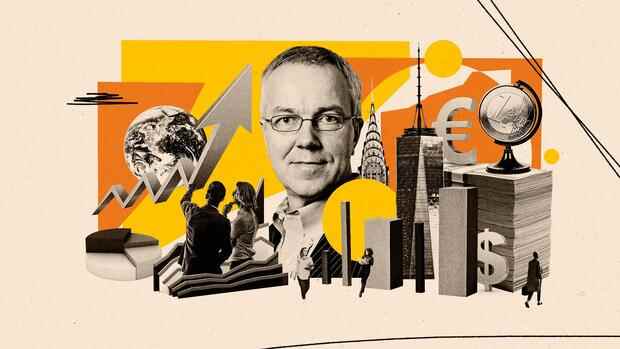Handelsblatt International correspondent Torsten Riecke analyzes interesting data and trends from all over the world in his column every week. You can reach him at [email protected].
(Photo: Klawe Rzeczy)
Anyone who measures the state of world trade against the state of the World Trade Organization could easily fall into permanent depression: the WTO has just postponed its ministerial meeting planned for this week again. As in June of last year, the corona pandemic of the Geneva organization again put a thick line through the travel plans of the representatives of the 164 member countries.
This means that the WTO remains a permanent construction site with all the unsolved problems from the dispute over vaccine patents to the blocked arbitration tribunals to the simmering conflict over a CO2 border adjustment for climate protection.
The WTO is paralyzed, world trade is not. After two years of pandemic, the international exchange of goods is much more robust than many experts feared in view of the global delivery bottlenecks: According to calculations by the World Trade Organization, international freight traffic is well on the way to returning to its upward trend before the pandemic.
World trade is thus recovering faster than global production. And the bottlenecks in global supply chains are also slowly opening. “The bottlenecks are still at a high level, but we have the worst behind us,” says Stephan Kooths, economist and head of the forecast center at the Kiel Institute for the World Economy. The Kiel Trade Indicator published monthly by the IfW confirms the upward trend.
Top jobs of the day
Find the best jobs now and
be notified by email.
In fact, there are increasing signs that the congestion in world trade could dissolve in the next few months. The waiting times in front of the major seaports of the world economy are becoming shorter. The cost of shipping containers across the Pacific has fallen by a quarter within a week.
The price trend is also down on the other seas. Most retail warehouses are well filled at the beginning of the Christmas season, even if there may still be shortages of individual products. We would therefore do well not to panic in the face of the new Corona variant.
“Pressure is being taken off the price valve
Especially since the world economy benefits from the flow of trade: “Pressure is taken off the price valve,” says IfW economist Kooths, “that also reduces the inflation surge.” Globalization has decreased, but the feared de-globalization has so far failed to materialize.
Most companies adhere to the international division of labor. That does not mean that the current trade conflicts and the political demands for strategic autonomy up to and including “decoupling” are just empty threats. It just takes much longer than expected for such structural changes to show up in the statistics.
World trade is still a long way from normalization, however. It could take another eight months for the bottlenecks in global supply chains to resolve, predicts economist Kooths. Food, metals and textiles could be a little faster; chemical and automotive companies will probably have to wait a little longer. According to the market researchers from Sea-Intelligence in Copenhagen, the freight rates for containers in overseas traffic will not have fallen back to the level before the pandemic for two years.
The fact that consumers are likely to return to normal consumption patterns in the coming year should also contribute to the slow recovery. During the pandemic, private demand shifted significantly towards durable consumer goods. The desire for services such as travel, dining and cultural visits had to wait in lockdown. This swing in demand has not only exacerbated the supply bottlenecks for durable consumer goods, it has also driven up their prices sharply. “We expect normalization here too,” says Kooths. In the inflation debate, too, one should therefore look carefully at which goods have become more expensive and why.
View of containers in the port of Liverpool. There are currently numerous bottlenecks in world trade, most of which can be traced back to the corona pandemic.
(Photo: dpa)
The IfW researchers and other economists, however, warn of setbacks. An extension of the pandemic through the omicron variant that has now emerged could also drag out the recovery in world trade and the congestion in the ports. In this case, the economists of the major British bank HSBC do not expect an improvement in the supply chains until the end of next year at the earliest.
The World Trade Organization no longer dares to make any forecasts. She left the question of when the now canceled ministerial meeting of the WTO should be rescheduled.
More: Because of the new corona variant: Oil prices collapse by more than ten percent.

